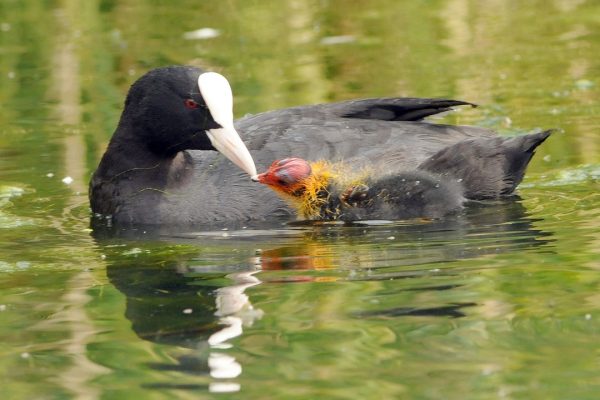
Coot
| Irish Name: | Cearc cheannann |
| Scientific name: | Fulica atra |
| Bird Family: | Crakes & Rails |
amber
Conservation status
Conservation status
Status
Resident at ponds and lakes throughout Ireland, augmented by winter visitors from the Continent and Britain - September to April.
Identification
A dark plump bird, similar to Moorhen in size and shape; has a short tail and small head. Useful to remember the old saying - 'as bald as a Coot' to remember the adult birds white forehead and bill, which contrast with its grey body and black head. Has sturdy legs with long lobbed toes, the lobes are used for swimming and are similar to the lobes on grebe toes. Dives from the surface with a small leap. The juvenile is brownish grey and can be told apart from juvenile moorhens by the extensive white on the neck and breast and the absence of any white on the under tail.
Voice
Various calls. Some loud, monosyllabic and often repeated. A frequent call sounds like a stone being struck with a metal bar, explosive and sharp.
Diet
Omnivorous. Feed on both plants and animals, but mainly on plants. Food taken from the water surface, including emergent plants and whilst diving. Food includes plant shoots, seeds, insects, algae and fish. Will sometimes steal food from other birds, off it own species or from other species, such as ducks.
Breeding
This species is not as widespread as the Moorhen as it requires larger bodies of water on which to nest. They nest in large shallow water bodies that are rich in nutrients and have abundant bottom vegetation for food and some emergent vegetation for nest anchorage. Widespread but absent from parts of Kerry, Cork, south-west Clare, west Galway, Mayo, Sligo and Donegal.
Wintering
Winter distribution is more widespread than breeding distribution, birds are found on lakes, coastal estuaries and river systems, but show a clear preference for large inland lakes.







